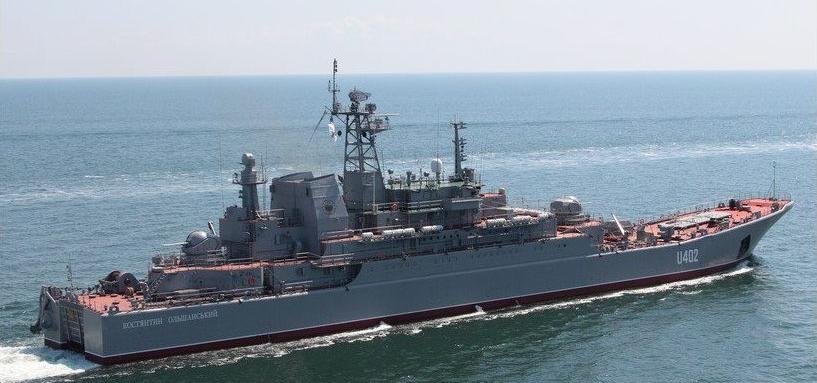The Ukrainian missile raid on the Russian Black Sea Fleet’s anchorage in Sevastopol, in occupied Crimea, didn’t hit two Russian warships.
No, according to an update from Ukrainian authorities, the Sunday raid—involving either air-launched Storm Shadow and SCALP-EG cruise missiles or ground-launched Neptunes or a mix of all three—struck four Russian ships.
The damaged vessels purportedly include two active Ropucha-class landing ships—Yamal and Azov—as well as an inactive Ropucha named Kostiantyn Olshansky that Russia captured from Ukraine during the invasion of Crimea in 2014 plus an intelligence vessel, Ivan Hurs, that 10 months ago survived an attack by Ukrainian drone boats.
While satellite imagery of Sevastopol, registered in the days following the raid, seem to confirm damage to several vessels, it doesn’t point to any obvious sinkings. It’s possible all four of the ships the Ukrainians claim they hit—reportedly in Sevastopol’s repair yard, ironically—are fixable.
But the raid at least temporarily has reduced, by 15 percent or so, the Black Sea Fleet’s pre-war force of around a dozen landing ships. A year ago, when the Russian garrison in southern Ukraine heavily depended on sea lines of communication to move ammunition to front-line regiments and brigades, that might have been a very big problem for the Kremlin.
But Russian engineers recently completed a new railroad that connects Rostov, in southern Russia, to Mariupol in occupied southern Ukraine—obviating the need for high-volume sea shipments to sustain Russia’s troops along Ukraine’s southern front. Railroads, which are fairly easy to repair, are harder to interdict than ships are.
All that is to say, strikes on Russian landing ships aren’t as damaging to Moscow’s war effort as they previously might have been. But given a choice between destroying or damaging Russian ships and not destroying or damaging Russian ships, the Ukrainians surely would choose the former.
In two years of hard fighting, the Ukrainians have damaged or sunk, using missiles and explosives-laden drone boats, seven active Ropuchas plus one Tapir-class landing vessel. They also have destroyed—of the Black Sea Fleet’s original three-dozen large ships—a cruiser, a submarine, a supply vessel, several patrol boats and two missile-corvettes and also damaged a spy ship.
At this rate, the Black Sea Fleet could cease to function in another 18 months or two years. And there’s not much the wider Russian navy can do to halt this steady degradation, as it can’t reinforce the Black Sea Fleet with large ships.
Bigger vessels that can’t move by land or river must pass through the Bosporus Strait to enter the Black Sea. Turkey controls the strait and doesn’t allow combatants to transit during wartime.

